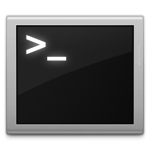At work we use Jenkins as our continuous integration server. Our implementation at work has to integrate with ClearCase and does a few tasks before actually doing the build. This is pretty typical. Our setup then calls
Build System Archive

Trimming The Trunk In Subversion
I have a number of third party libraries that I use in my applications. I also have a number of utility type assemblies that I have created and re-use in many applications. In this post, I will

Getting Started With CI Using Hudson For Your .NET Projects
In this post, I will explore installing and configuring Hudson as a continuous integration server for .NET projects. Why Hudson? This is good question. I know other CI servers exist, however, Hudson happens to already be an

Use MSTest To Run Your Tests Via Command Line
One step in setting up your continuous integration environment is getting your tests to run via a command line. My development environment is Visual Studio and I am using the Microsoft testing framework. I did not imagine
